|
MN-NICE ACFW October 2015 - - Delores Topliff “Why do writers write? Because it isn’t there.” ~ American novelist, Thomas Berger (1924-) Creating a scene is like setting up camera shots, or combining elements and style for paintings: Writing Styles: Simple Realism (literal and concrete) - Grandma Moses, Andrew Wyeth Impressionist painters depict visual impressions of exact moments, especially the shifting effects of light and color - How the sky looked when you met, during the perfect kiss, when you parted . . . Examples? Monet, Renoir, and VanGogh. Abstract expressionism is from a Latin word meaning “pulled away,” the idea of something detached from physical or concrete reality. Piet Mondrian; Jackson Pollock’s She Wolf. Surrealism works to “resolve previously contradictory conditions of dream and reality.” Cubism reduces natural forms to their geometrical equivalents, like Picasso. Consciously choose what you want to accomplish because words do the same. Quotes from these artists and writers express the concepts well: Leonardo da Vinci said, “Painting is poetry that is seen rather than felt, and painting is poetry that is felt rather than seen.” William Zinsser in Writing Well. “Michelangelo carved David by getting a block of marble and cutting away everything that didn’t look like David.” Truman Capote: "To me, the greatest pleasure of writing is not what it's about, but the inner music that words make….Writing has laws of perspective, of light and shade just as painting does, or music. If you are born knowing them, fine. If not, learn them. Then rearrange the rules to suit yourself.” Stephen King: to write is human, to edit is divine. Weeds: “Jordy Verrill's place was out on Bluebird Creek, and he was alone when the meteor traced low fire across the sky and hit the creek's east bank.” Writing is word painting. Select brushes and colors to suit your purpose. Slap words on blank canvas, then step back to see your picture developing. Stepping back is retrospection, finding better ways to portray truth. God in Genesis, chapters 1-11 starts out by revealing the BIG picture, the full powerful majesty of the heavens with Him as Creator. In chapter 12 he focuses on a man, Abram, outside of his tent door, and cares about the needs of a family He will work with and fulfill promises to if they will work with Him. He first revealed the big picture by zooming out. Then He revealed more intimate setting by zooming in. At ACFW Deborah Raney presented a workshop titled, Show me a story—writing cinematically). Her husband is a photographer and she helps him set up lighting, reflectors, props, everything. The same principles apply to writing: Jump Cuts & Fade-outs. Don’t wrap every scene up with a nice bow before going to the next. Establishing Shot: Paint the big picture before zooming in on action. “It was hard to tell how far away in the distance the fire burned … Paint with words instead of using adjective labels - Sometimes we label things instead of applying our artist’s eye to paint them. Ditch clichés like “beautiful sunset” or “ugly frogs.” Instead use unique detail. On a sad day the sun bled orange rays across the sky. Describe one flaw in something beautiful or a redeeming quality in something ugly (Rembrandt’s painted eyes always had a drop of white to contrast the blue or brown color for contrast) to come up with sentences we all wish we’d written! John Steinbeck was a marine biologist. His accurate descriptions of animals facing Dust Bowl conditions parallel the challenges of the family trying to escape its hardships in Grapes of Wrath. His description of a turtle crossing the road (and planting seeds in the process) is biologically perfect! Kipling’s Rikki-tikki-tavi in The Jungle Book is so accurate in its description of birds, plants, and animals involved, you can match them to encyclopedia entries, but rich story details memorably bring each creature and situation to life. Actively incorporate all five senses. Rich sensory detail creates realism and lets us enter the scene. In a Dallas office during lunch break I read Vilhjalmur Stefansson’s My Life with the Eskimo and got so involved reading about the polar blizzard, I gasped when two co-workers returned coatless and said, “Bart, Joe, you forgot your parkas!” I still haven’t lived it down. Order of Space-- Convey pleasing perspective and distance. What we see is external to our body but needs little interpretation and is easy to apply. Use care with what your characters see. Include the qualities of light—bright sunshine, shadows, or mist. Boundaries like walls or hedges. Color hues and textures. If your mom visits, she may see flaws in your home others won’t. Some visiting friends notice new paintings or books. What unique thing will your characters notice (smell, feel, hear,) that no one else does? Use these details to establish mood and feeling. When our hearts are heavy, we may only see our shoe tops. When our hearts soar, we walk among the stars. Kipling also uses perspective beautifully in The Miracle of Purun Baghat in his Second Jungle Book: “Immediately below him the hillside fell away, clean and cleared for fifteen hundred feet, where a little village of stone-walled houses, with roofs of beaten earth, clung to the steep tilt. All round it the tiny terraced fields lay out like aprons of patchwork on the knees of the mountain, and cows no bigger than beetles grazed between the smooth stone circles of the threshing-floors. Looking across the valley, the eye was deceived by the size of things, and could not at first realize that what seemed to be low scrub, on the opposite mountain-flank, was in truth a forest of hundred-foot pines. Purun Bhagat saw an eagle swoop across the gigantic hollow, but the great bird dwindled to a dot ere it was half-way over. A few bands of scattered clouds strung up and down the valley, catching on a shoulder of the hills, or rising up and dying out when they were level with the head of the pass. And “Here shall I find peace,” said Purun Bhagat.” Try ordering your scenes from outside in, inside out, corner to corner, or intentional chaos for the effect you want whether you’re creating indoor settings or outdoor landscapes. Write like a painter choosing how to show order, progression, and completeness. Let words build the environment where your characters live and interact, like God created the Garden of Eden and placed man within as His crowning creation. Let indoor/outdoor environments partner with characters so that your settings are your added force in story development. With Dickens the weather was also a reliable presence conveying mood (like Hollywood uses theme music in movies to build suspense, action, prepare for romance, etc.) Character depiction: In real life, we usually notice face and eyes first (Wild Bill Hickok). What features, characteristics, or sounds stand out? (People repeatedly clear throats, shift eyes, or heave bosoms.) Charles Dickens wrote 150 years ago with skilled plots but was most loved for his humor and defending social issues. His characters are unforgettable. Among his top ten: Oliver Twist, Ebenezer Scrooge, Miss Havisham, Uriah Heep, Wilkins Macawber, Fagin, Abel Magwitch… Who is your favorite written character. Why? How was he/she developed? Edgar Allan Poe’s Fall of the House of Usher, 1839, perfectly exemplifies his Principle of Composition: “Everything in the story must create a single unified effect.” His opening paragraphs establish a Gothic mood as he crosses a vast ghostlike landscape to approach the ancient decaying mansion: “During the whole of a dull, dark, and soundless day in the autumn of the year, when the clouds hung oppressively low in the heavens, I had been passing alone, on horseback, through a singularly dreary tract of country; and at length found myself, as the shades of the evening drew on, within view of the melancholy House of Usher. I know not how it was—but, with the first glimpse of the building, a sense of insufferable gloom pervaded my spirit.” Once he enters the home he is led to a room where his seemingly random odd observations intentionally describe chaos: “The valet now threw open a door and ushered me into the presence of his master. The room in which I found myself was very large and lofty. The windows were long, narrow, and pointed, and at so vast a distance from the black oaken floor as to be altogether inaccessible from within. Feeble gleams of encrimsoned light made their way through the trellised panes, and served to render sufficiently distinct the more prominent objects around; the eye, however, struggled in vain to reach the remoter angles of the chamber, or the recesses of the vaulted and fretted ceiling. Dark draperies hung upon the walls. The general furniture was profuse, comfortless, antique, and tattered. Many books and musical instruments lay scattered about, but failed to give any vitality to the scene. I felt that I breathed an atmosphere of sorrow. An air of stern, deep, and irredeemable gloom hung over and pervaded all….From that chamber, and from that mansion, I fled aghast…
Now, selecting from these skills, take five minutes to create a scene setting the first scene for your story. Tailor it for your inciting incident. Place your character in the scene. Accessorize it with perfect word choices to unite your settings and characters in a happy-ever-after writing marriage. Comments are closed.
|
Books
|
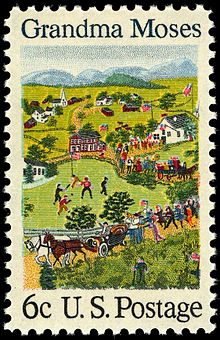
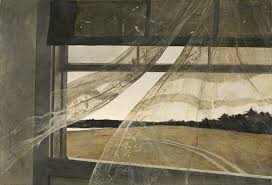
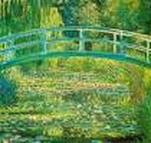



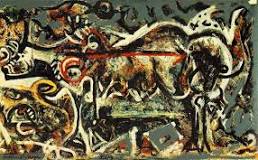
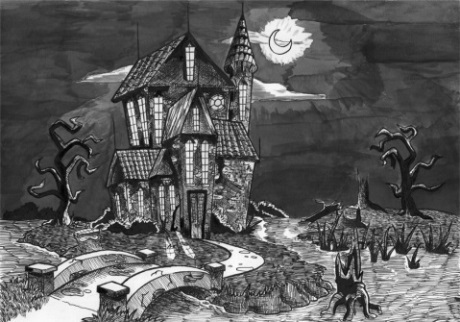
 RSS Feed
RSS Feed
